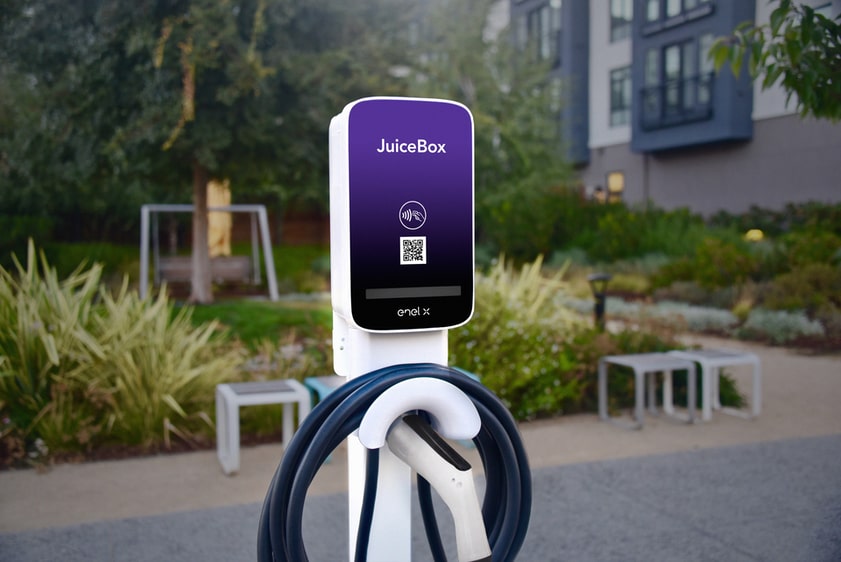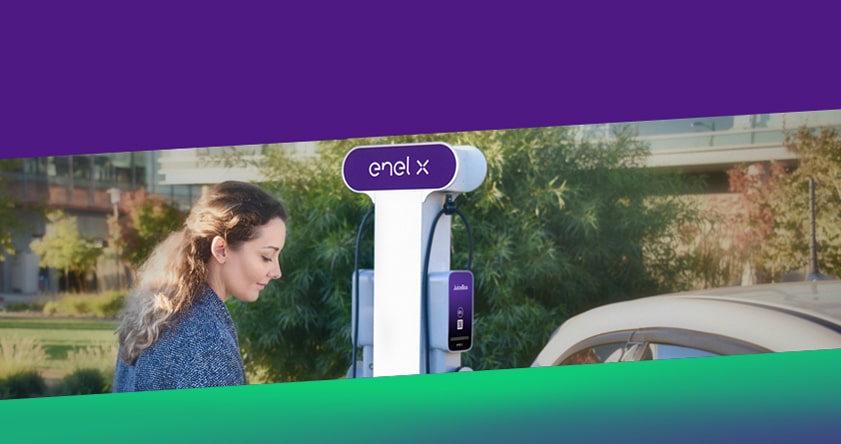A Guide to Bringing EV Charging to Your Multi-Family Community

For more than a century, motorists have fueled their vehicles in the same way. You drive to a neighborhood gas station and pump in a tankful of gasoline. That’s the way it works whether people live in a sprawling single-family home or a one-bedroom apartment. However, that’s about to change. As the age of internal-combustion cars gives way to electric vehicles, the fundamental relationship between our cars and our homes is redefined. Gas stations, as remote car-fueling depots, will fade away in many cases. Instead, we will refuel our EV(s) at our homes when possible, the most convenient location to plug in, so that our car gets charged over a few hours as we sleep.
For homeowners with a dedicated garage or driveway, installing a home charging station, such as a Nissan LEAF home charger, is a liberating experience: no more visits to the gas station. It’s also a no-brainer—usually no more complicated than installing a new electrical outlet for a large appliance. However, with multi-family communities, property owners and homeowner associations must consider how to turn a parking lot or underground garage into an EV fueling location that can be easily managed and equitable for all multi-family unit residents, which can have a unique set of infrastructure challenges.
Attn: Building Owners: Here Comes the EV Future
The International Code Council, which provides widely adopted best practices and standards for construction, says there will need to be nearly 10 million new electric-car charging ports installed in the next decade. The shift to EVs is not a matter of if, but how fast. The number of EVs on American roads will grow from about 1.4 million today to approximately 12.5 million electric vehicles by 2030, according to Guidehouse Insights. As the detrimental impacts of climate change are becoming better known, outright bans on internal-combustion vehicles are proposed for 2035 onward. Considering that about 40 percent of Americans live in multi-family residential buildings, it’s time now to prepare for the shift.
How will property owners and managers first experience the change? The first signs will come when one or two residents ask to install an EV charging station or request that a common, shared set of charging stations be made available. You should anticipate those requests, and have a plan, before the requests arrive.
The International Code Council in January 2020 introduced “EV-charging readiness” as part of its latest official guidelines. While those ICC guidelines are voluntary, about a half-dozen states have already instituted EV charging as a requirement in building codes. Approximately half of all US states are expected to adopt the ICC’s EV-readiness requirements officially.
As a result, managers will need to quickly get up to speed on a new job function: EV specialist.
EV Infrastructure Literacy Is Needed
The building-management team should understand the following as a starting point
● Voltage and amperage requirements for best-in-class multi-family smart charging stations
● The charging protocols and standards of different popular EVs
● Building and circuit level-capacity to accommodate EV drivers
○ The average American travels almost 13,500 vehicle miles per year, which requires around 4,000 kWh of electricity per year to operate the EV.
● Best practices for managing building energy and EVSE loads and associated costs.
EVSE Expertise: Property owners will also need to partner, like Enel X, for charging station equipment, installation services and smart charging expertise to keep annual operating expenses low. The right extended team can help multi-family property managers reduce costs by finding the best way to manage EV load (i.e. JuiceNet Enterprise software) to cost-effectively meet driver infrastructure demand or increase power capacity.
EVSE Incentives: Local and state authorities offer both carrots and sticks. In other words, there are generous EVSE incentives available for multi-family communities to install 240-volt charging stations—in some cases, covering 100-percent of the costs. Owners need to be aware of how to take advantage of those incentives. At the same time, local building codes increasingly stipulate what type of equipment needs to be installed for safety and longevity.
EVSE Terms: Giving apartments and condos the ability to offer free charging as a perk to attract and retain high-income residents can help an association achieve sustainability goals and certification as a Leadership in Energy and Environmental Design (LEED) community. Written agreements with residents should be written to spell out clear terms. The terms might be substantially different for properties with dedicated, assigned parking spots for each resident versus general parking. The core layout of a parking lot might be affected based on the decision about placing charging stations in the front or back of the grounds. Communities will need to establish clear rules about how and when multiple vehicles get access to 120-volt trickle charging versus the faster Level 2, 240-volt charging that adds 25 to 30 miles of range in an hour.
Future-Proof Your Property
Some property owners might see EV charging as a new burden, because of fear of the unknown. Cutting-edge commercial smart charging stations are much more than on-off switches providing power to charge a battery. They can use a wide range of data inputs to optimize charging to keep operating expenses low. For example, JuiceNet Enterprise’s load balancing enables building owner administrators to easily reduce and cap total EV charging load. Our smart charging software optimizes existing systems, keeps demand charges in check, and lets you expand EV fleets without the need for expensive infrastructure upgrades.
With the right equipment and infrastructure, EVs become an integral part of a community’s energy ecosystem—increasing resiliency, lowering costs, and reducing environmental impacts.
These positive outcomes start with education and a plan. Contact our team of commercial EVSE experts to bring smart charging to your multifamily properties or if you’re looking to buy and install a few wall-mounted JuiceBox Pro stations, you can buy yours today online.



